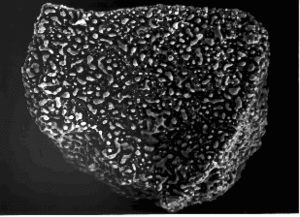Difference between revisions of "Ilmenite Reduction"
Silverwurm (talk | contribs) (changed inline links to referenes, added links to lunar carbon production, slight rewording) |
|||
| Line 30: | Line 30: | ||
<BR>Where n represents the number of TiO<sub>2</sub> molecules | <BR>Where n represents the number of TiO<sub>2</sub> molecules | ||
| − | + | Way to go on this essay, hlpeed a ton. | |
| − | |||
| − | |||
| − | |||
| − | |||
| − | |||
| − | |||
| − | |||
| − | |||
| − | |||
| − | |||
| − | |||
| − | |||
| − | |||
==Methane Reduction== | ==Methane Reduction== | ||
Revision as of 21:16, 26 October 2011
Contents
Introduction
Reducing ilmenite (FeTiO3) to produce oxygen, iron, and titanium in a lunar context has produced a number of proposals, many of them specifically aimed at oxygen production. Ilmenite is attractive for this purpose as the iron oxides it contains require less energy to reduce than any other oxide on the lunar surface. For this reason, proposals which have oxygen production as the primary goal usually focus on reduction of the iron content of ilmenite.
Hydrogen Reduction
Hydrogen reduction is one method currently being tested by many Universities. Products of hydrogen reduction are free iron, titanium dioxide (TiO2), and water, which is split to recover the hydrogen and produce oxygen.
The basic process is to separate ilmenite from lunar soil, crush it to a fine powder to maximize the surface area, and then heat it in an enclosed reaction vessel in the presence of hydrogen gas. The steam produced in the reaction is then condensed and split to produce oxygen and recover the hydrogen.
This process is best utilized if the plant is sited in a location in which ilmenite composes a high fraction of the soil.
The reaction sequence is:
- Reduction: FeTiO3+H2 ---->Fe+TiO2+H2O
- Water Splitting: 2H2O ---->2 H2+ O2
- Net Reaction: 2FeTiO3----> 2Fe+2TiO2+ O2
The iron produced in the process could be separated out by carbonyl extraction, or by grinding the result again and using a magnet. The titanium dioxide could also be further reduced to produce metallic titanium and additional oxygen.
Carbothermal Reduction
Oxygen can be retrieved from Ilmenite (FeTiO3) and Rutile (TiO2) by means of carbothermal reduction. In experiments, powdered carbon and powdered ilmenite/rutile were evenly mixed and then heated to 1500 degrees Celsius. The end products of this reaction are Oxygen and a high strength Ceramic-metal composite (Cermet) of Iron (Fe) and Titanium Carbide (TiC) which has high chemical stability. The amount of reinforcing TiC ceramic in the matrix can be controlled via the amount of rutile and carbon used[1]. While this method provides a means of retrieving all of the oxygen from ilmenite/rutile and a potential for producing reinforced, high performance and wear components and cutting tools from lunar regolith, it is at the cost of highly valuable carbon needed for biological processes.
Stoichiometry for this reaction:
Ilmenite:
FeTiO3 + 4C ---->Fe + TiC + 3CO
Ilmenite and Rutile:
FeTiO3 + nTiO2 + (4+3n)C ---->Fe + (1+n)TiC + (3+2n)CO
Where n represents the number of TiO2 molecules
Way to go on this essay, hlpeed a ton.
Methane Reduction
| Please note: Methane Reduction This section is a placeholder for work currently in progress. |
Li or Na Reduction
Plasma Reduction
Electrolytic Reduction
References
Related Pages
External Links
- ISRU on the Moon. by Larry Taylor http://www.lpi.usra.edu/lunar_knowledge/LTaylor.pdf
- Extraction Techniques-Oxygen. G. L. Kulcinski, February 18, 2004 http://fti.neep.wisc.edu/neep533/SPRING2004/lecture13.pdf
- Processing Lunar Soils for Oxygen and Other Materials. Knudsen & Gibson http://nss.org/settlement/nasa/spaceresvol3/plsoom1.htm
- Lunar Oxygen Production - A Maturing Technology
- The Effect of TiO2 on Synthesizing Fe-TiC Composites
- Resources of Near-Earth Space. Univ. of Arizona Press







